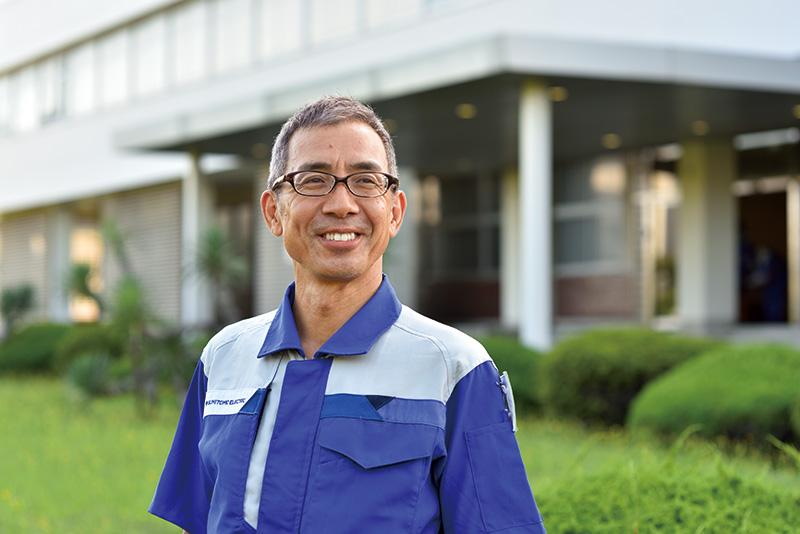
Optical Cables Underpin the Cloud Society
Meeting the needs for larger transmission capacity
Business domains of standard optical fibers, submarine optical fibers and optical cables
Optical fibers are the core components of networks that underpin the cloud society. They are thin fibers made from silica glass and plastics. An optical fiber has a double-layer structure: a core in the center and cladding around the core. It serves as a medium to transmit optical signals within the core using a phenomenon called total internal reflection. Optical fiber communication is characterized by stable data transmission with no influence of electromagnetic waves and capable of large-capacity long-haul transmission. Starting to manufacture optical cables in 1974, the Sumitomo Electric Group has developed and offered various products for more than 40 years.
At present, the Sumitomo Electric Group operates mainly in three optical communication business domains of standard optical fibers, submarine optical fibers and optical cables. In the standard optical fiber business and submarine optical fiber business, the Sumitomo Electric Group manufactures optical fibers whereas in the optical cable business, it manufactures optical fiber cables that fit in any environment both indoors and outdoors by stranding very thin glass fibers and coating them with a jacket. Obviously, these products have different markets. Standard optical fibers are commodities traded globally, while optical cables are customer-oriented products closely related to the region. The Sumitomo Electric Group has offered optical fibers as global products, but has conventionally offered optical fiber cables basically for the Japanese market. The submarine optical fiber business is a domain that has been pioneered by the Sumitomo Electric Group’s original technologies. In fact, the Sumitomo Electric Group has the top share in the global market.
Ultra-high fiber count and ultra-low loss transmission technologies make a difference in the global market
In Japan, the replacement of copper cables with optical cables started in the early 1980s, and has almost been completed across Japan. The main market target market of optical fibers will shift to markets outside Japan, where the optical fiber market has been steadily growing. The growth rate is particularly high in the Chinese market. During the past 10 years, the Sumitomo Electric Group’s sales ratio outside Japan exceeded that of Japan. Today, about 75% of the optical fibers and cables are for the markets outside Japan. The Chinese market also contributes significantly to the profit. The Sumitomo Electric Group’s share of optical fibers is among the highest in the world, but expansion of market share is not the only objective. Shigeru Suemori, General Manager of the Optical Fiber & Cable Div., states that it is essential to meet the needs of society and customers.
“Optical communication systems will be required to fulfill three requirements: large capacity, low latency* and high reliability. Our mission is to achieve these requirements at high levels. For example, to fulfill the large-capacity transmission requirements, it is important to minimize transmission loss to the utmost limit. Low transmission loss improves the receiving sensitivity, which helps transmit more optical signals. The transmission capacity can be efficiently increased by accommodating many optical fibers in a single cable. This idea is embodied as ultra-high fiber count optical cables. To achieve large transmission capacity, it is crucial to realize ultra-high fiber count and ultra-low loss technologies simultaneously. This is the key point of differentiation from competitors. Sumitomo Electric has been focusing its resources on mastering these technologies.”
* Latency: End-to-end signal transmission time on a transmission line

A paradigm shift in the market: Cloud services and data centers
Suemori’s statement reflects a dramatic change in the market. Conventionally, the main users of optical cables were communication carriers. In this changing time, however, a paradigm shift is occurring. Cloud computing has been spreading, and data centers are being operated by providers that offer cloud services. These service providers are IT giants that are based in the U.S. and operate their businesses globally by taking full advantage of their cutting-edge IT solutions. They have emerged as users who own and operate optical cables. They distribute a huge amount of information and offer IT resources such as software, storage and servers. In this context, the information is big data that can be used as important resources in business strategy. Most of the data centers that they own have tens of thousands (or even hundreds of thousands) of servers. This is the reason why they are referred to as hyperscale DCs. The complexes of local data center buildings are connected by large-capacity optical cables, namely, the ultra-high fiber count optical cables that Suemori mentioned. The next chapter will describe the Sumitomo Electric Group’s specific efforts to develop ultra-high fiber count optical cables.

NEXT
Opening up a new world by achieving ultra-high fiber count optical fibers
— Optical cables that connect data centers
Registration of public notification
If you register your e-mail address, we will notify you when the latest issue is published. If you wish, please register from the registration form.
To delete your registration, please visit here.
